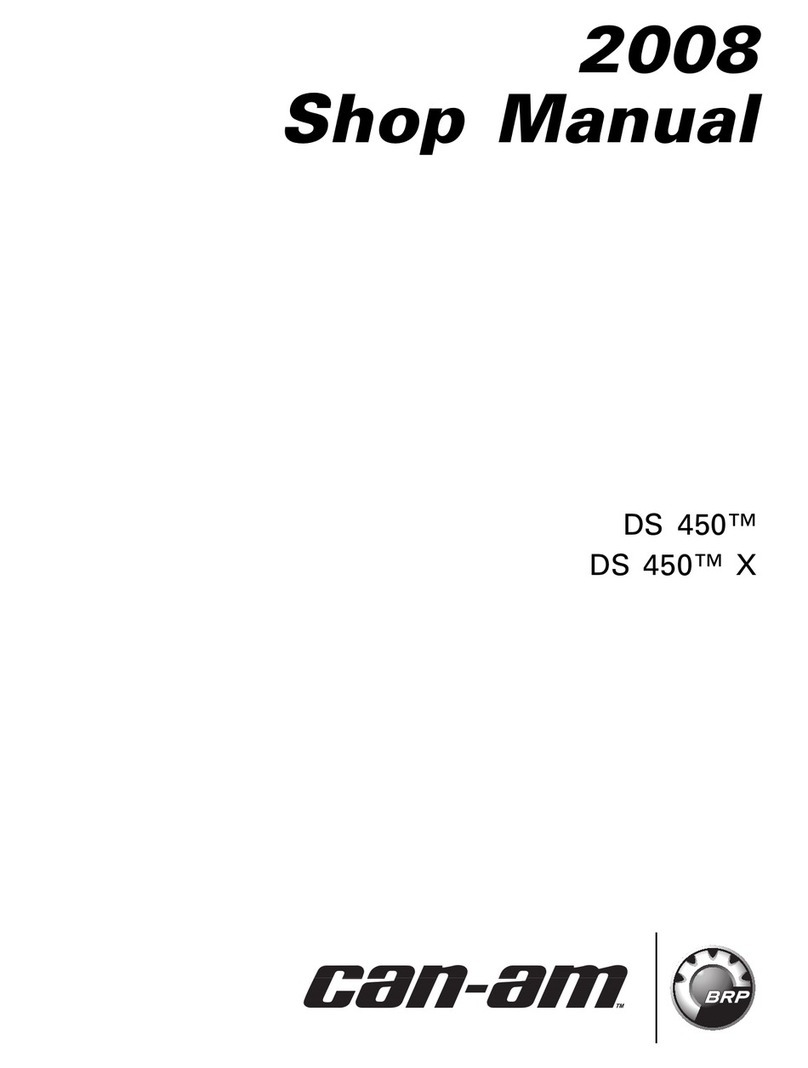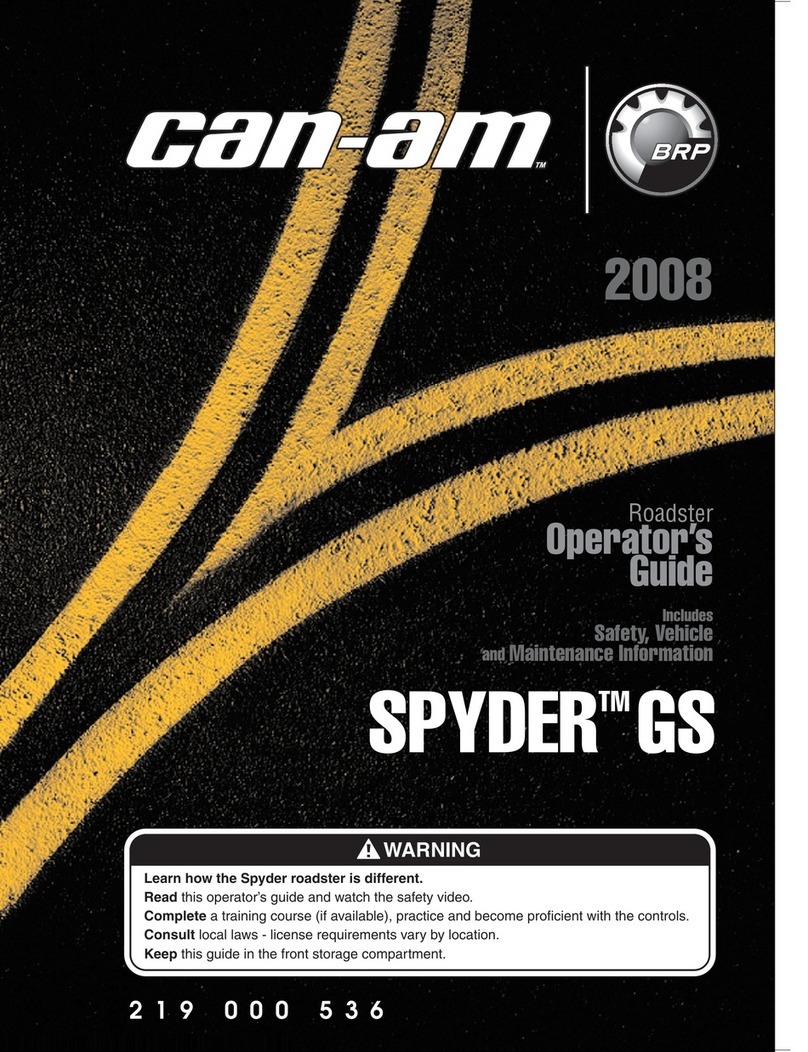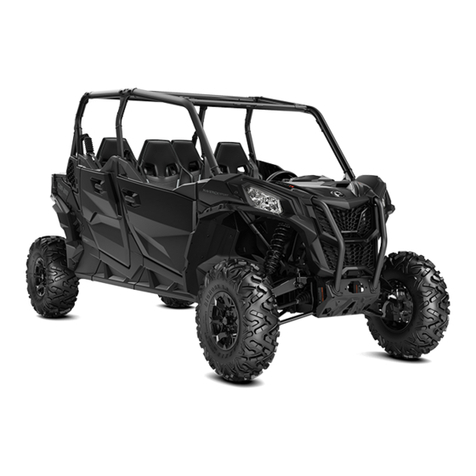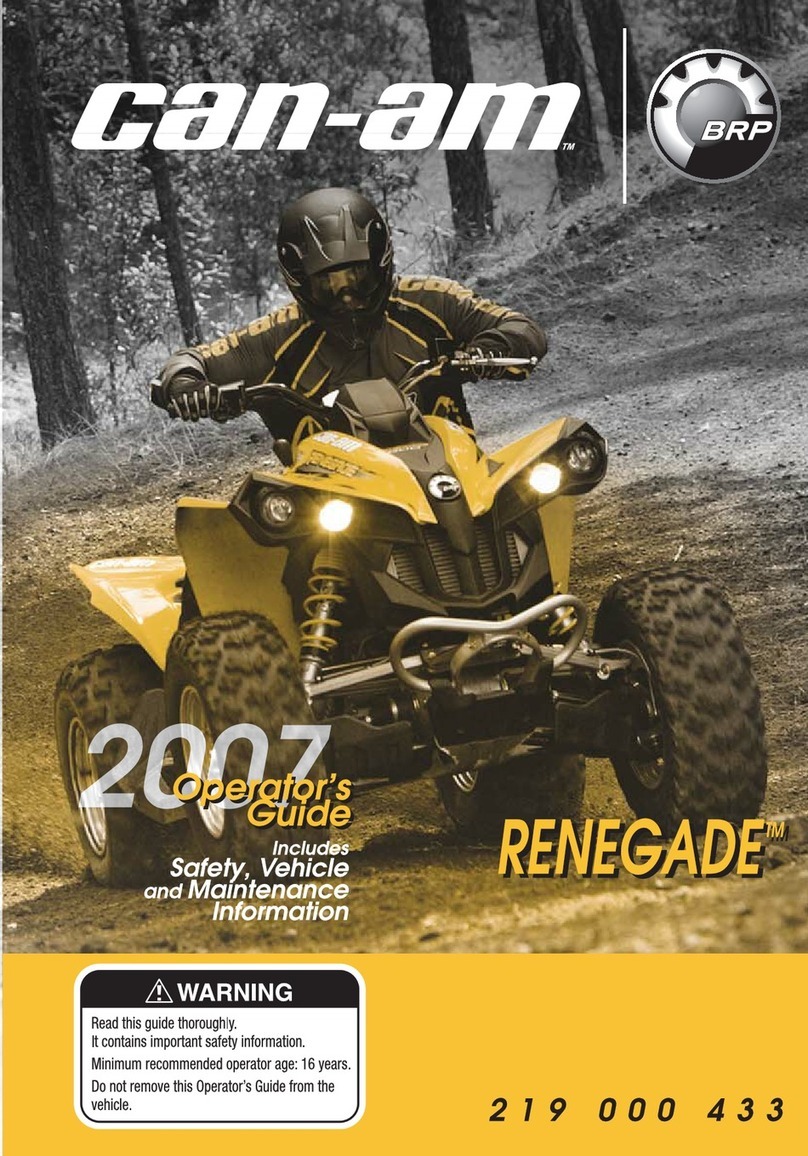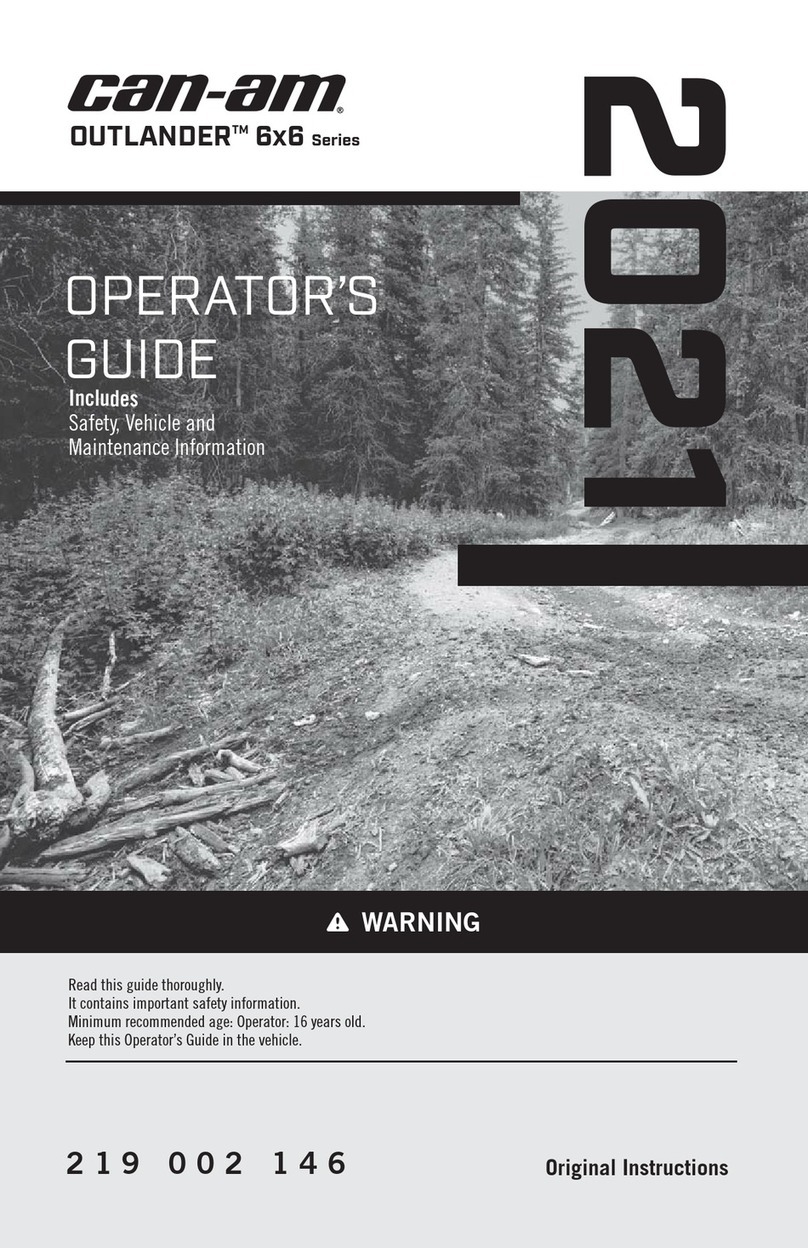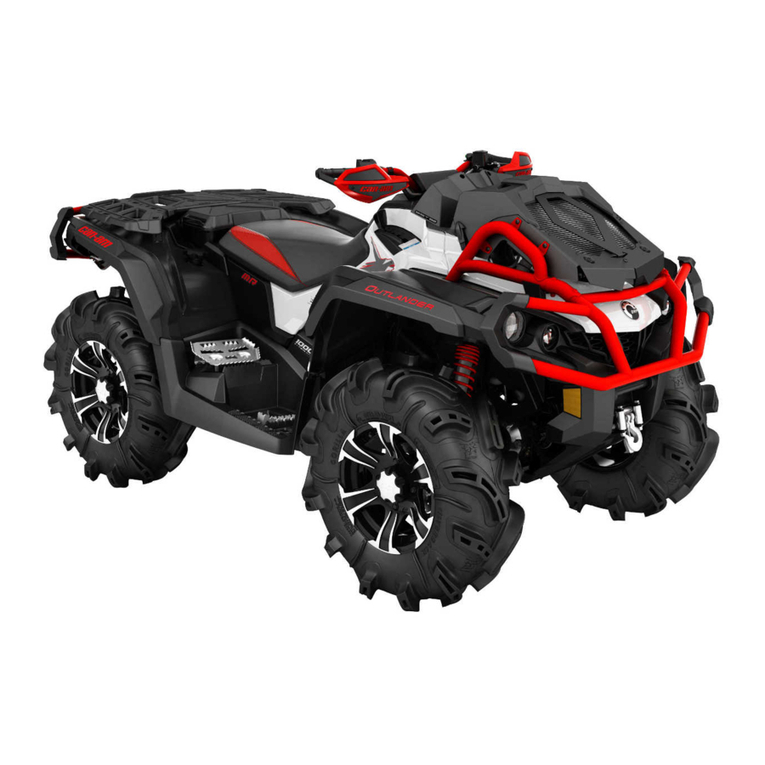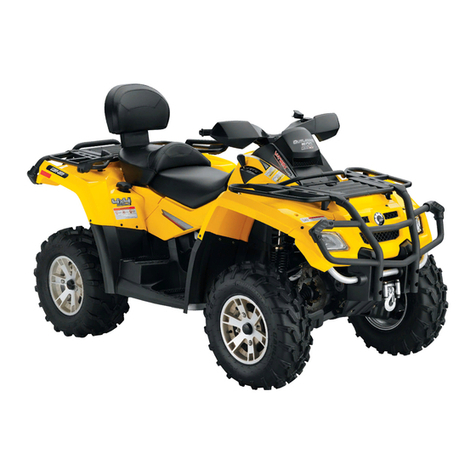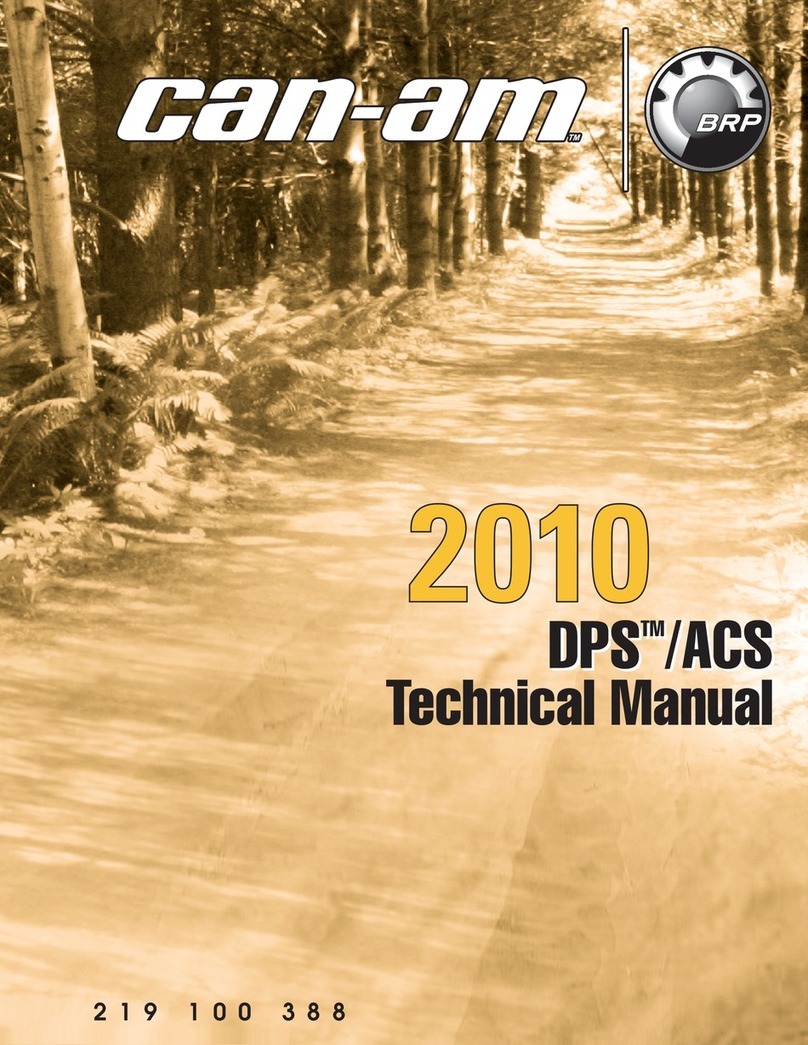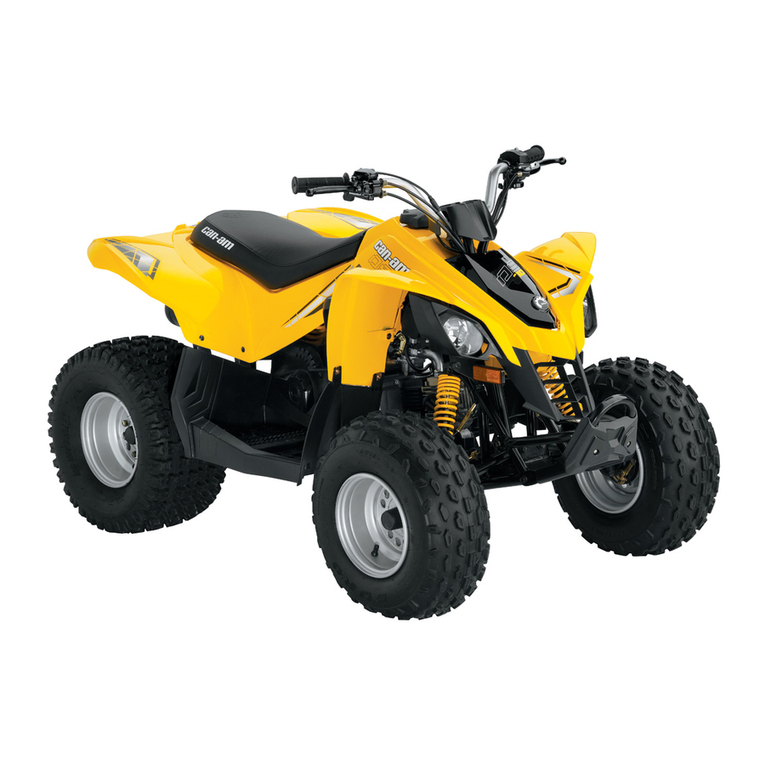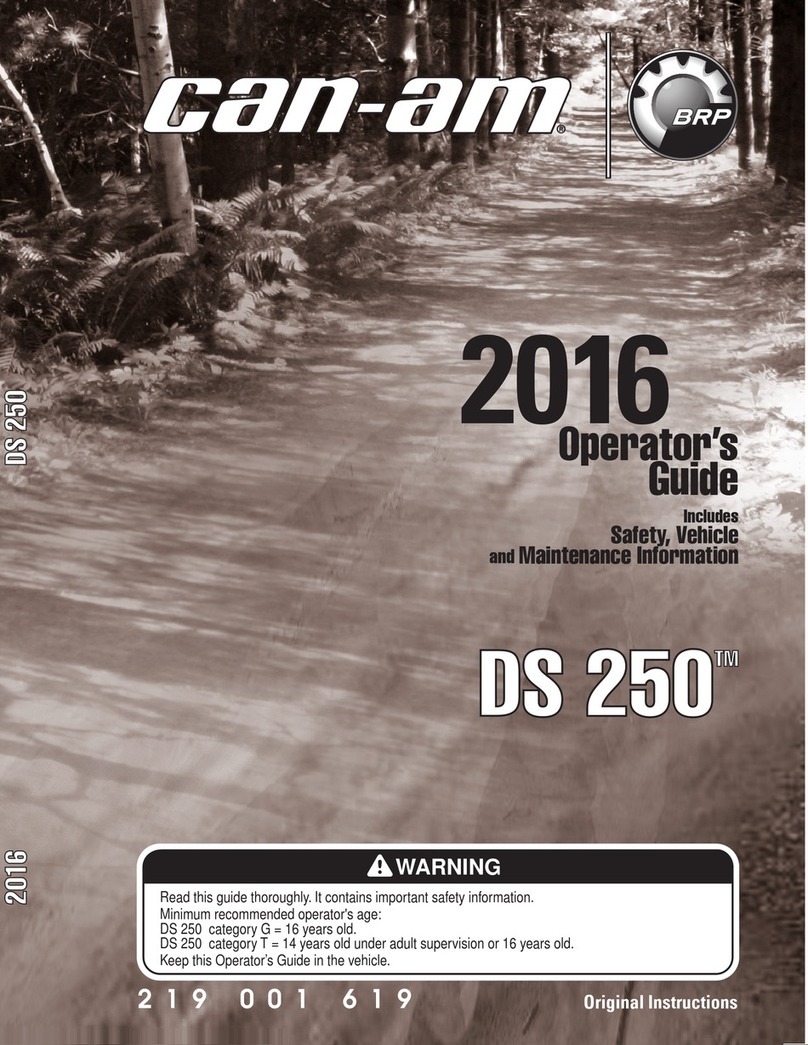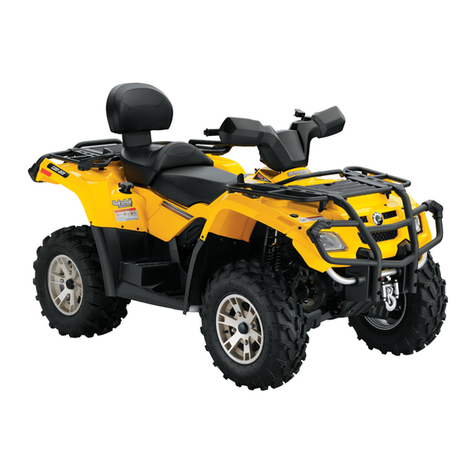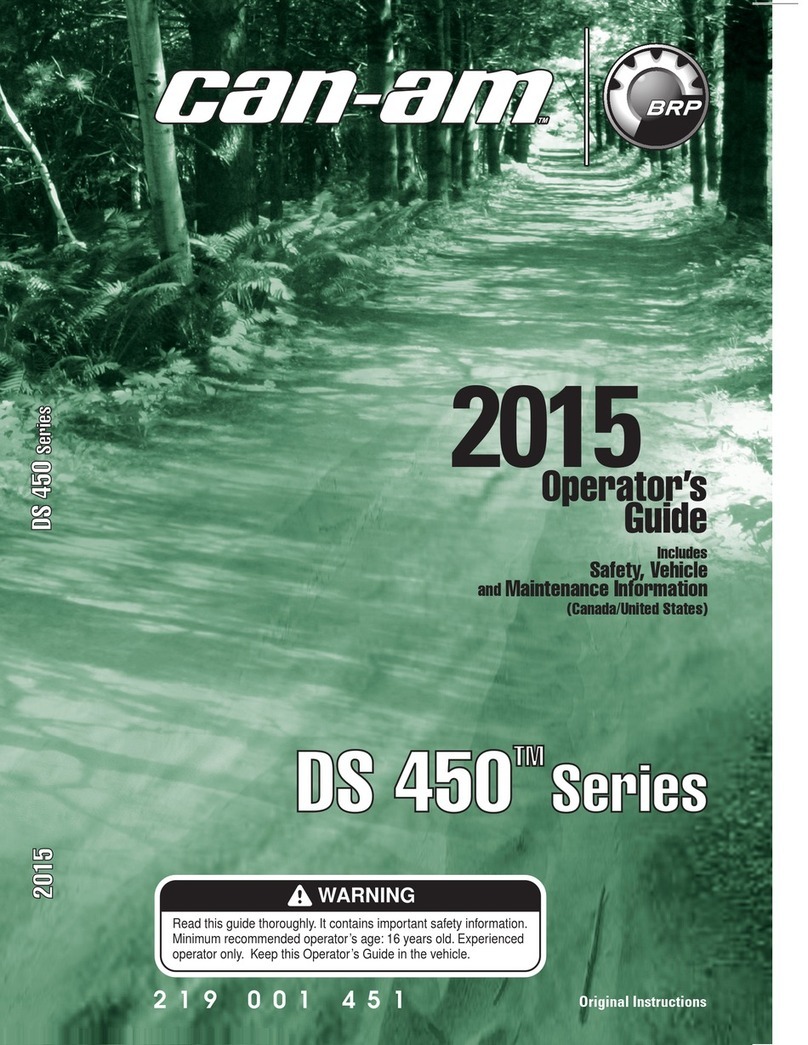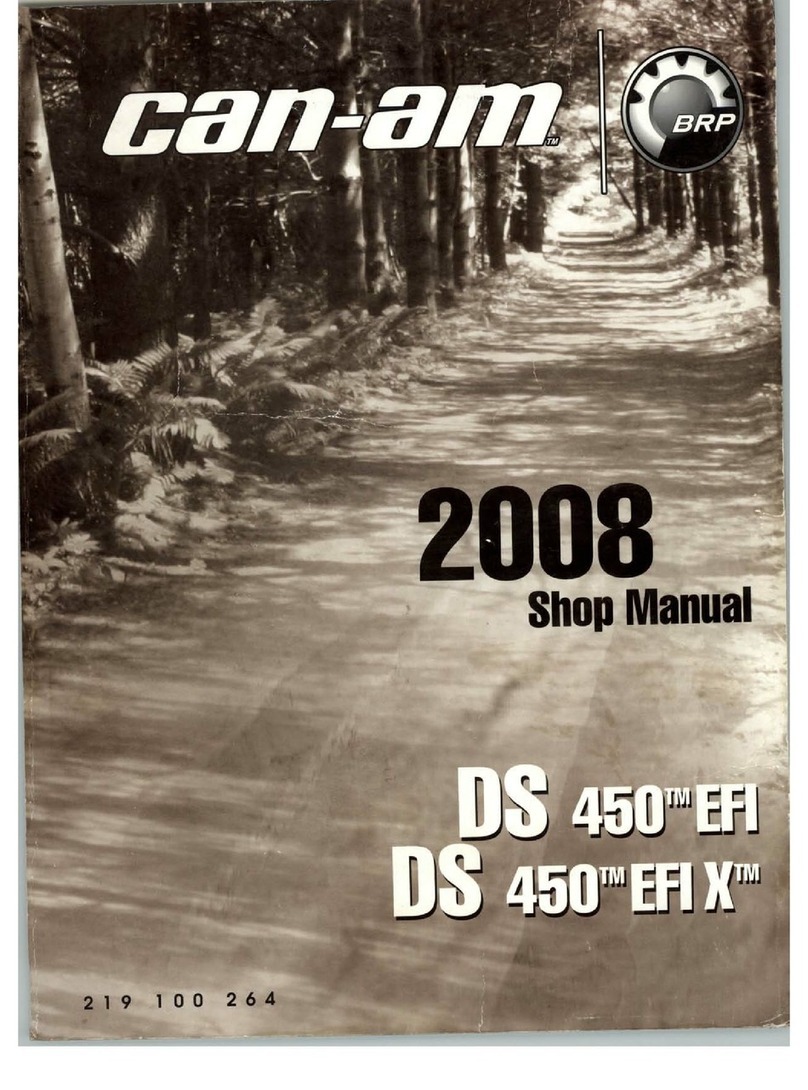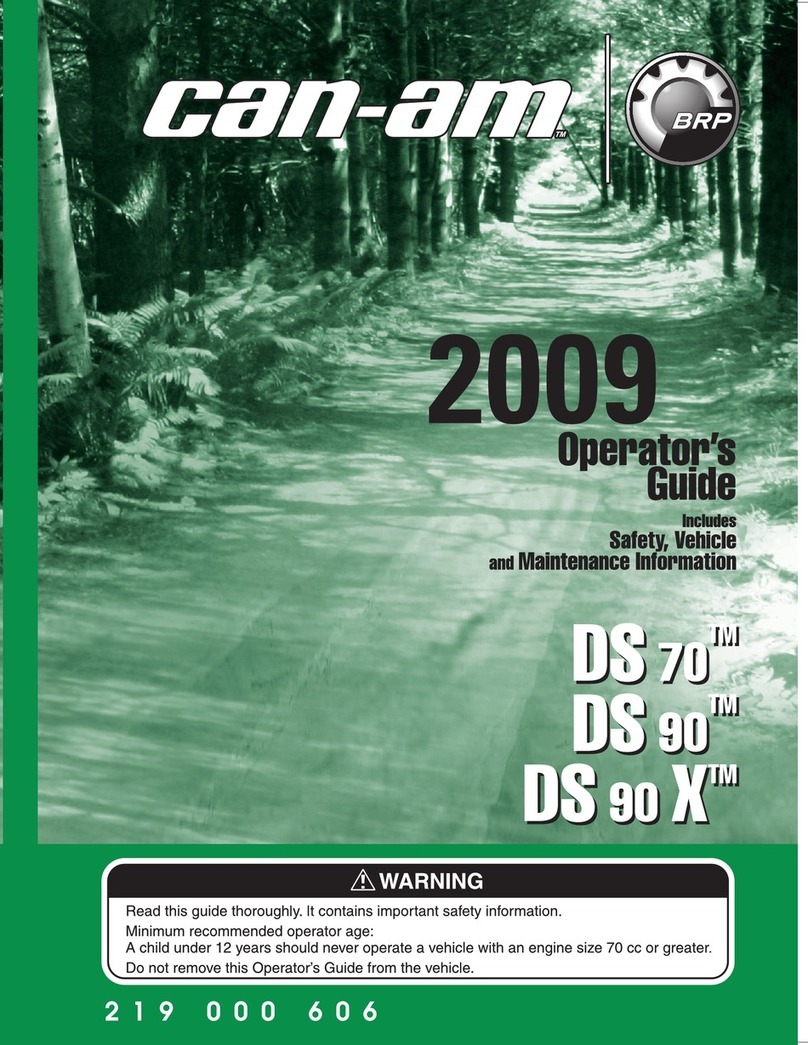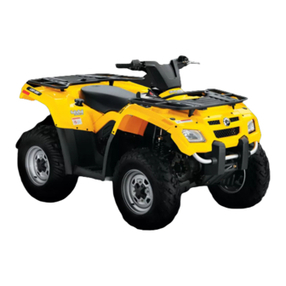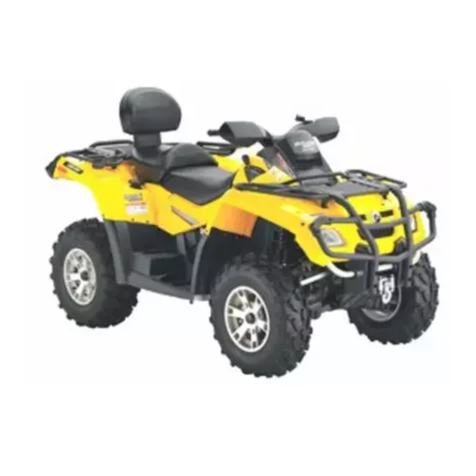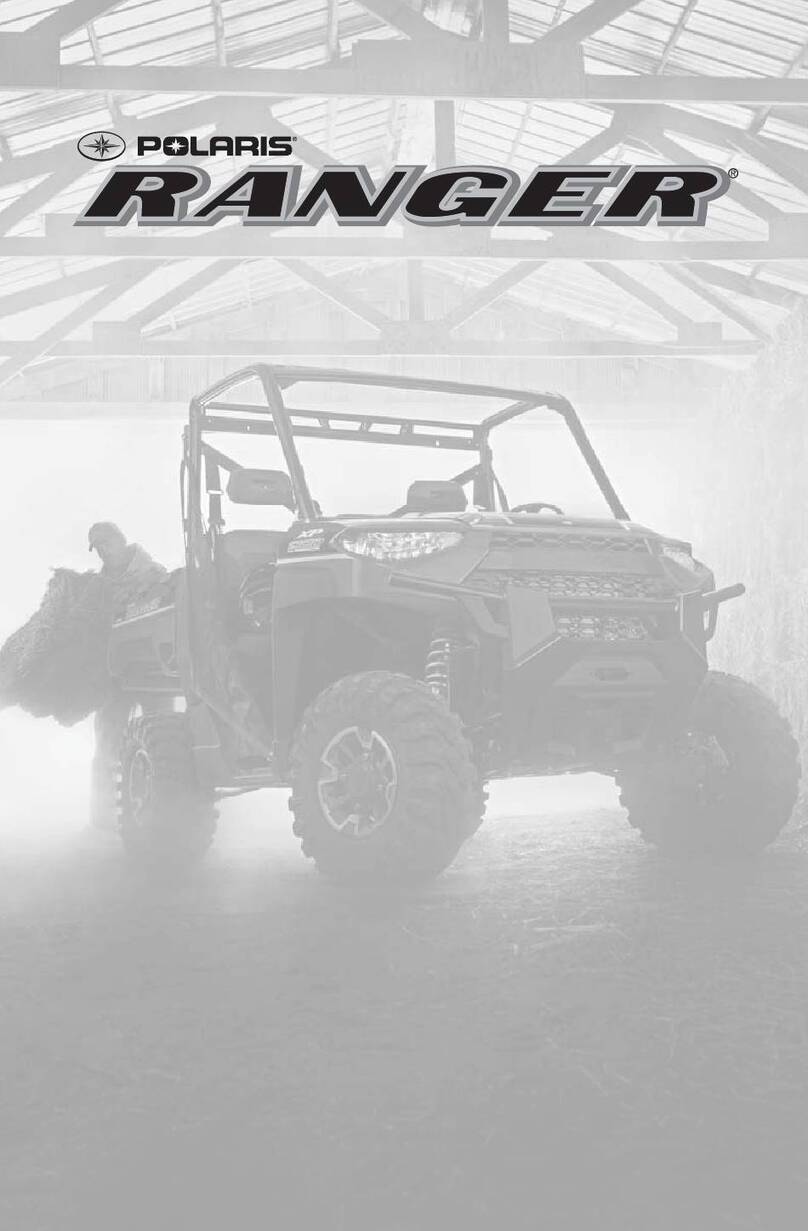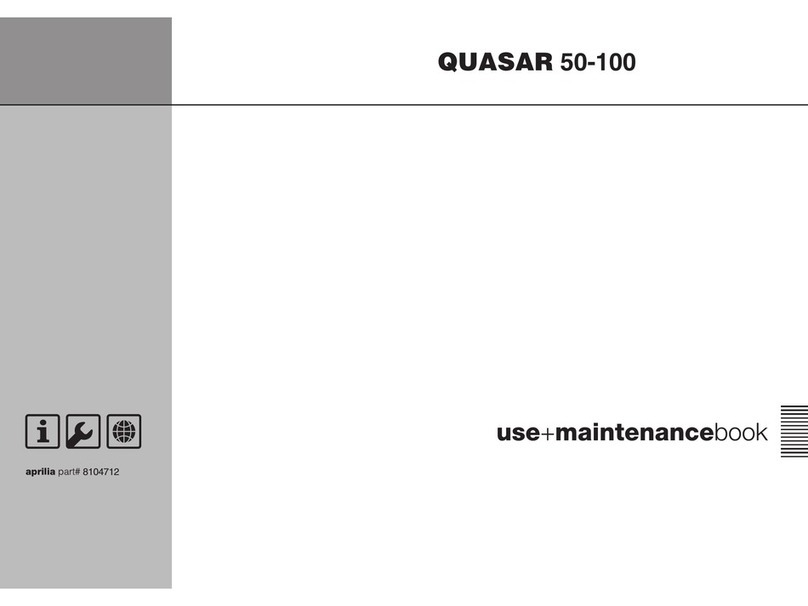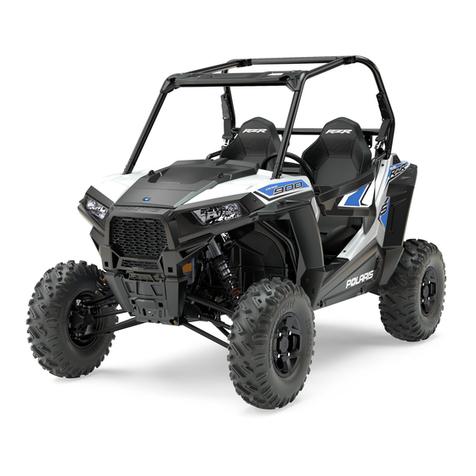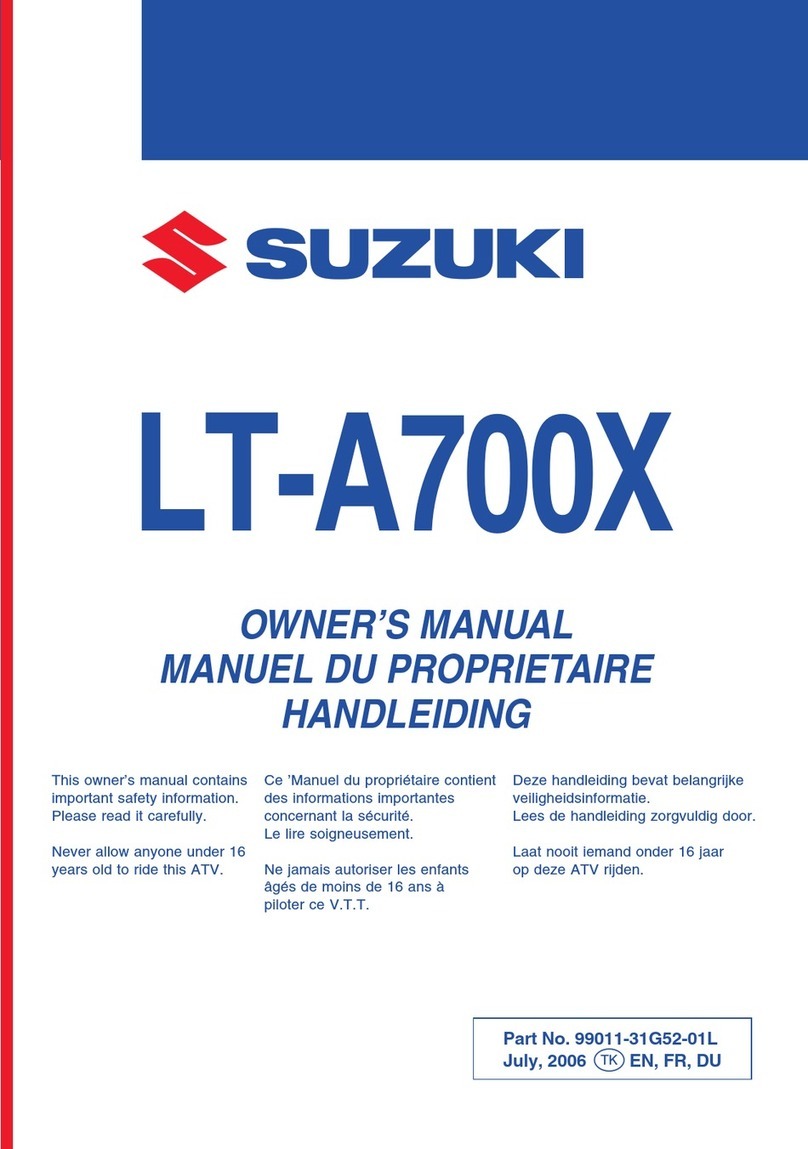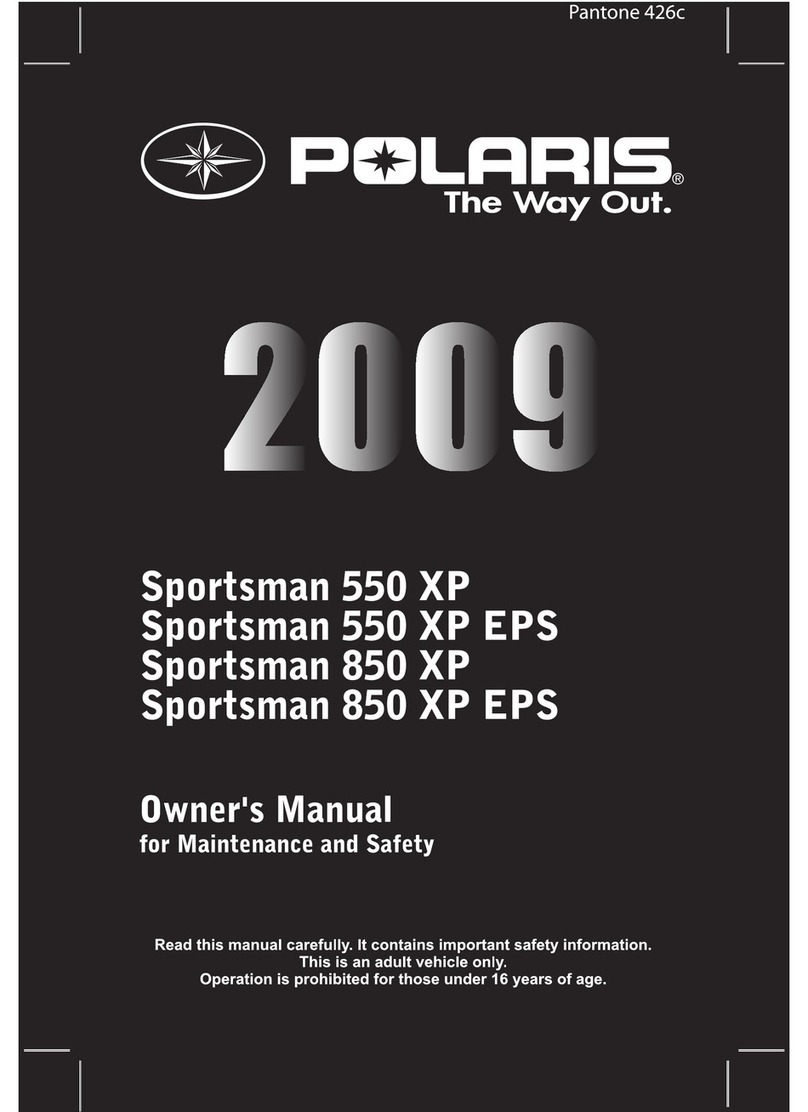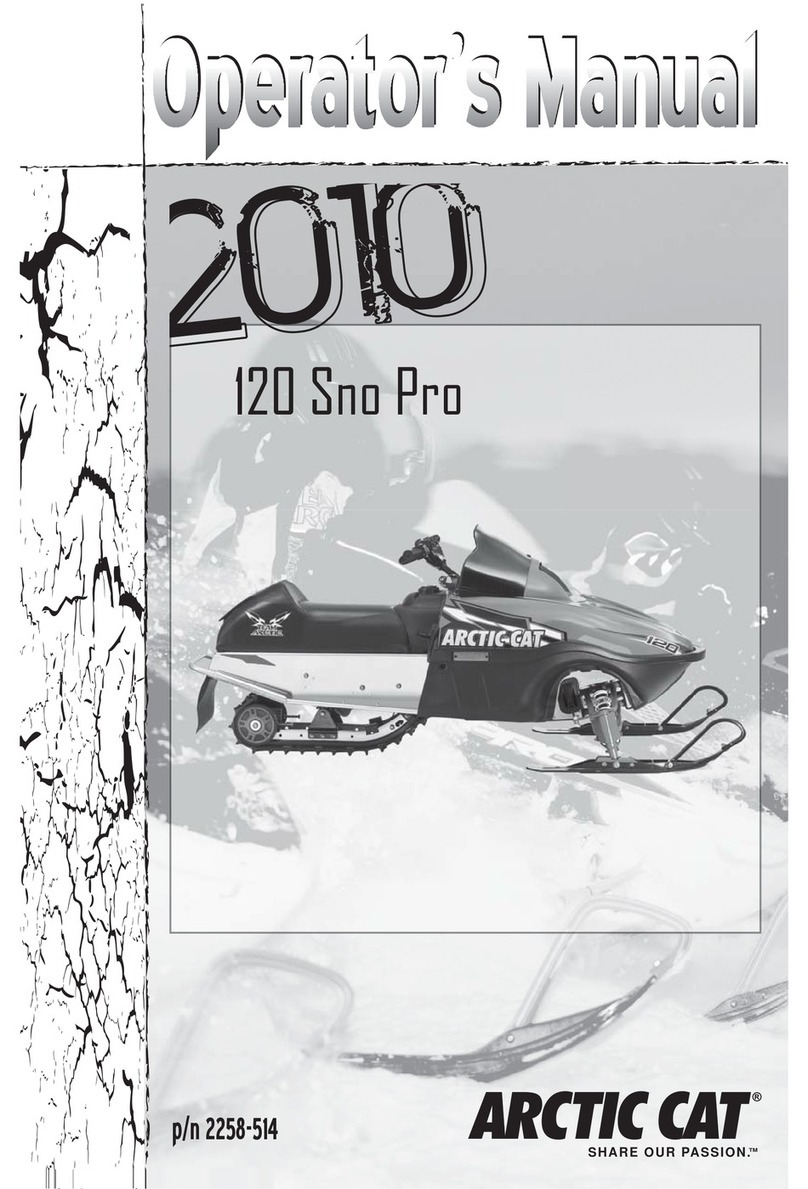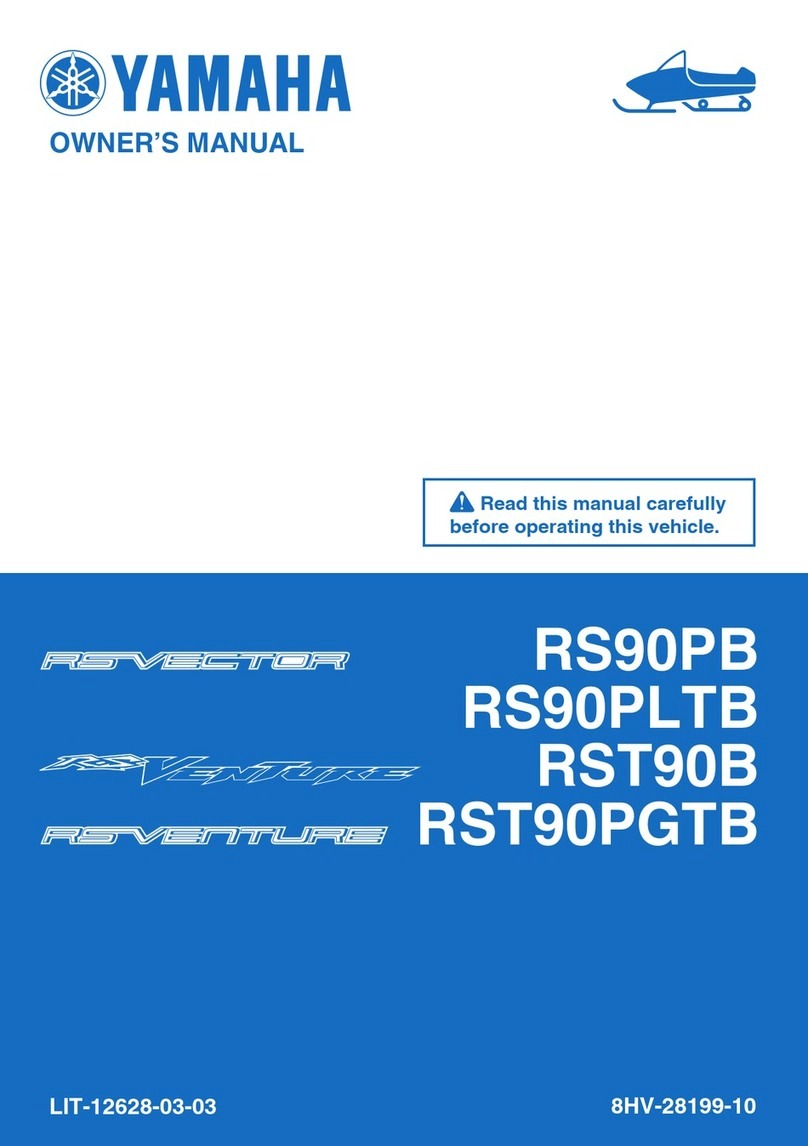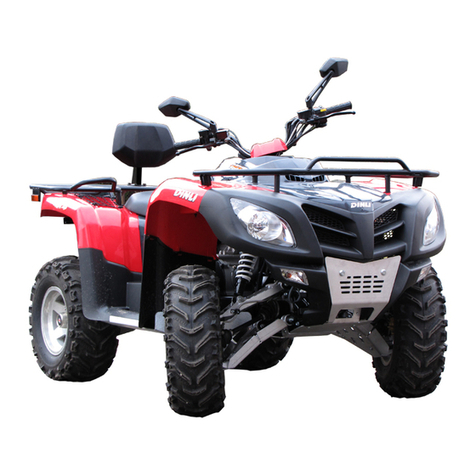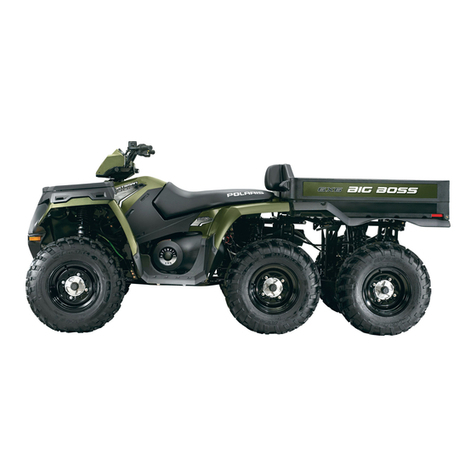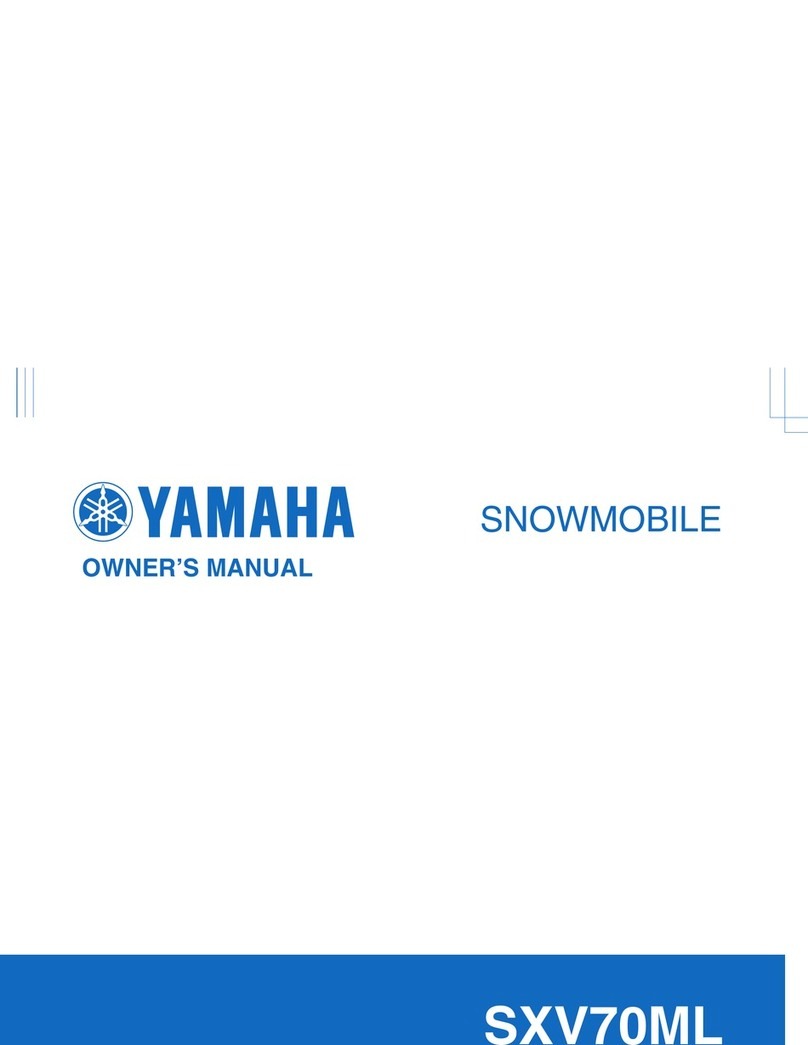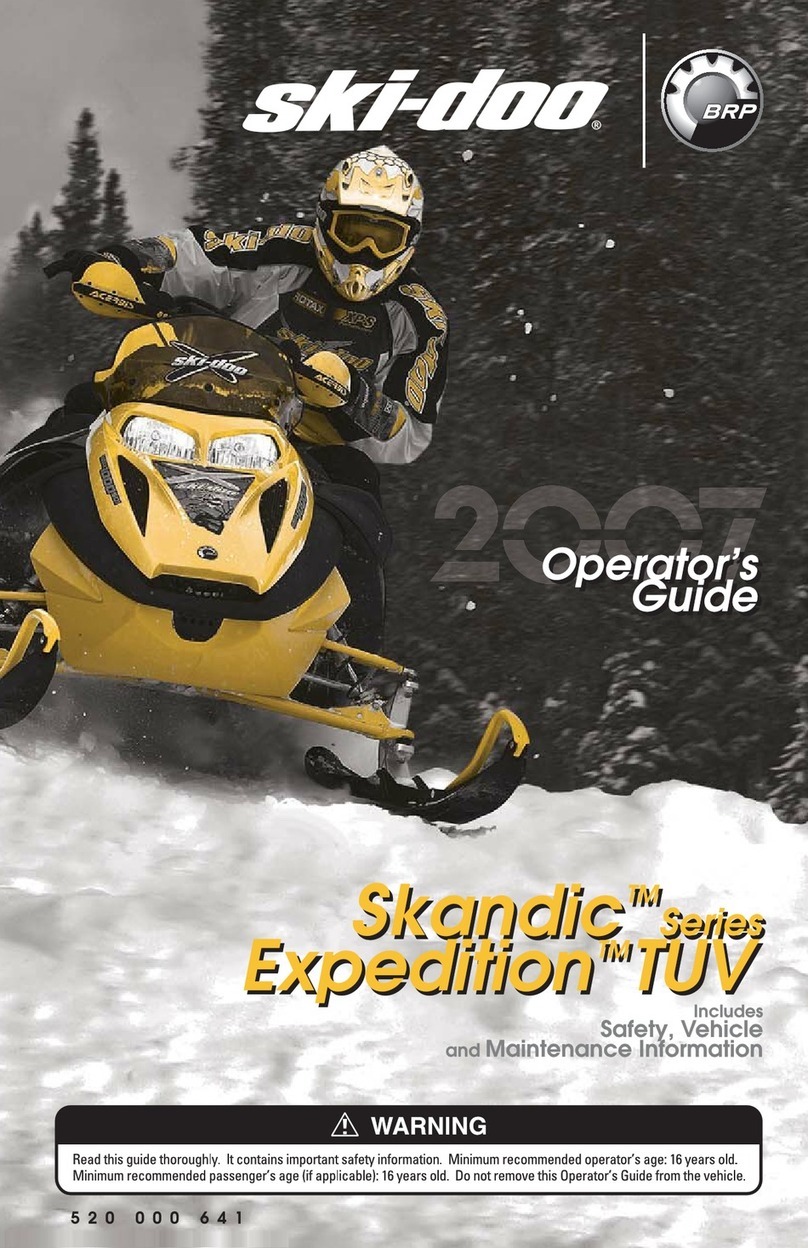
FOREWORD
Age Recommendation
These vehicles are a category "Y"
(Youth Model), always follow this age
recommendation:
– DS 90™ and DS 90 X vehicles are a
category Y-10+ andshouldbeused
by children age 10 or older under
adult supervision, or by an operator
age 16 or older.
– Also, never allow continued use of
an ATV by a child if the child does not
have the abilities to operate it safely,
regardless of age.
Training Course
Never operate this vehicle without
proper instruction. Take a training
course. All operators should receive
training from a certified instructor.
FOR MORE INFORMATION ABOUT
ATV SAFETY, contact an authorized
Can-Am dealer to find out about avail-
able training courses nearest you.
Safety Messages
The types of safety messages, what
they look like, and how they are used
in this guide are explained as follows:
The safety alert symbol indicates
a potential injury hazard.
WARNING
Indicates a potential hazard that, if
not avoided, could result in serious
injury or death.
CAUTION Indicates a haz-
ardous situation which, if not
avoided, could result in minor or
moderate injury.
NOTICE Indicates an instruction
which, if not followed, could result
in severely damaged vehicle com-
ponents or other property.
About this Operator's
Guide
This Operator's Guide has been pre-
pared to acquaint the owner/operator
of a new vehicle with the various ve-
hicle controls, maintenance and safe
operating instructions. It is indispens-
able for the proper use of the product.
Keep this Operator's Guide in the vehi-
cle so that you can refer to it for things
such as maintenance, troubleshooting
and for instructing others.
Note that this guide is available in sev-
eral languages. In the event of any dis-
crepancy, the English version shall pre-
vail.
If you want to view and/or print an ex-
tra copy of your Operator's Guide, sim-
ply visit the following website www.
operatorsguide.brp.com.
The information contained in this doc-
ument are correct at the time of publi-
cation. However, BRP maintains a pol-
icy of continuous improvement of its
products without imposing upon itself
any obligation to install them on prod-
ucts previously manufactured. Due
to late changes, some differences be-
tween the manufactured product and
the descriptions and/or specifications
in this guide may occur. BRP reserves
the right at any time to discontinue or
change specifications, designs, fea-
tures, models or equipment without
incurring any obligation upon itself.
This Operator's Guide and the
SAFETY
DVD
should remain with the vehicle
when it's sold.
2_______________

